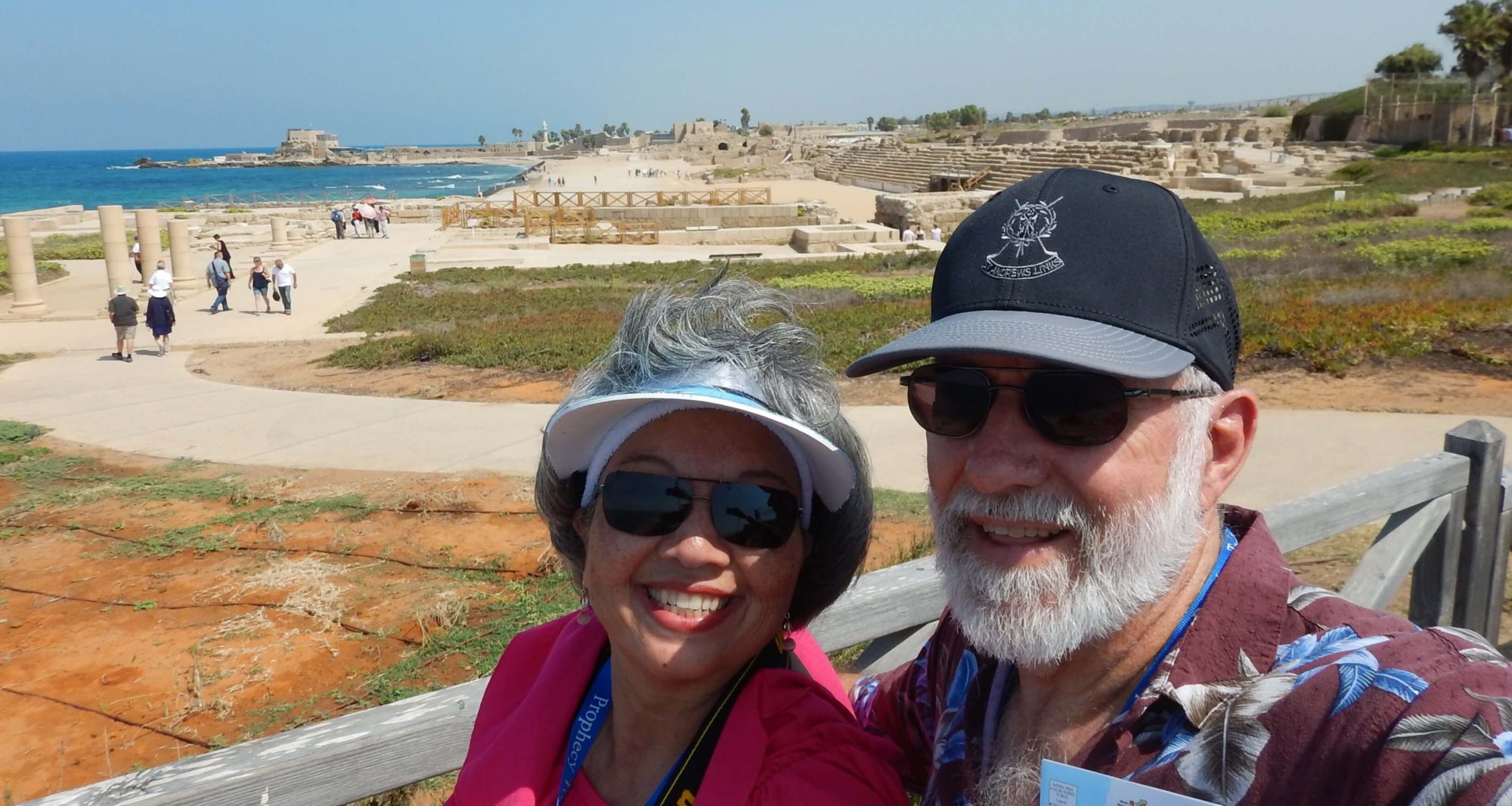Katakolon, pronounced “kuh-TACK-uh-lawn,” is a seaside village on the Peloponnese peninsula. It is probably best known for being the gateway to the site of ancient Olympia, home of the Greek gods and the site of the first Olympic games.
Approximately 30 miles from Katakolon, Olympia is in the valley of the Alfios River, at the foot of Mt. Kronos. Here, the first Olympic games were recorded in 776 BC, and there was only one event… a 650-foot long footrace. As years passed, events like the javelin and discus throwing, wrestling, long jump, horse and chariot racing, and boxing were incorporated. The games were discontinued in the 4th century AD due to the rise of a Christian emperor who banned the competitions. It wasn’t until 1896 that the games were reinstituted in the Athens Olympic stadium.
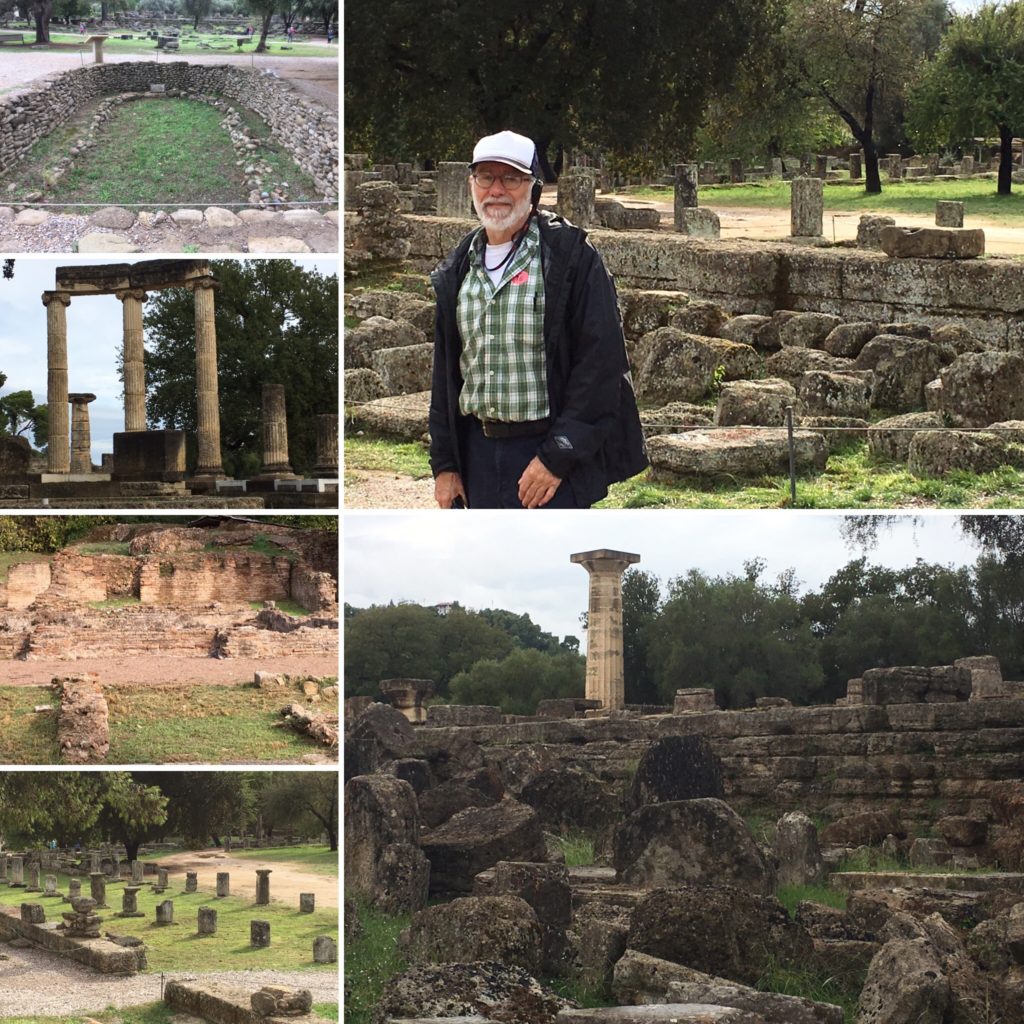
(Clockwise from top-left: swimming pool, John in front of gymnasium, temple of Zeus, gymnasium, Roman bath, Phillippeion)
The archaeological site in Olympia is home to the Temple of Zeus, the king of the Greek gods. Built between 470-45 BC, it once housed the majestic 42-ft high, 20-ft wide gold and ivory statue of Zeus.
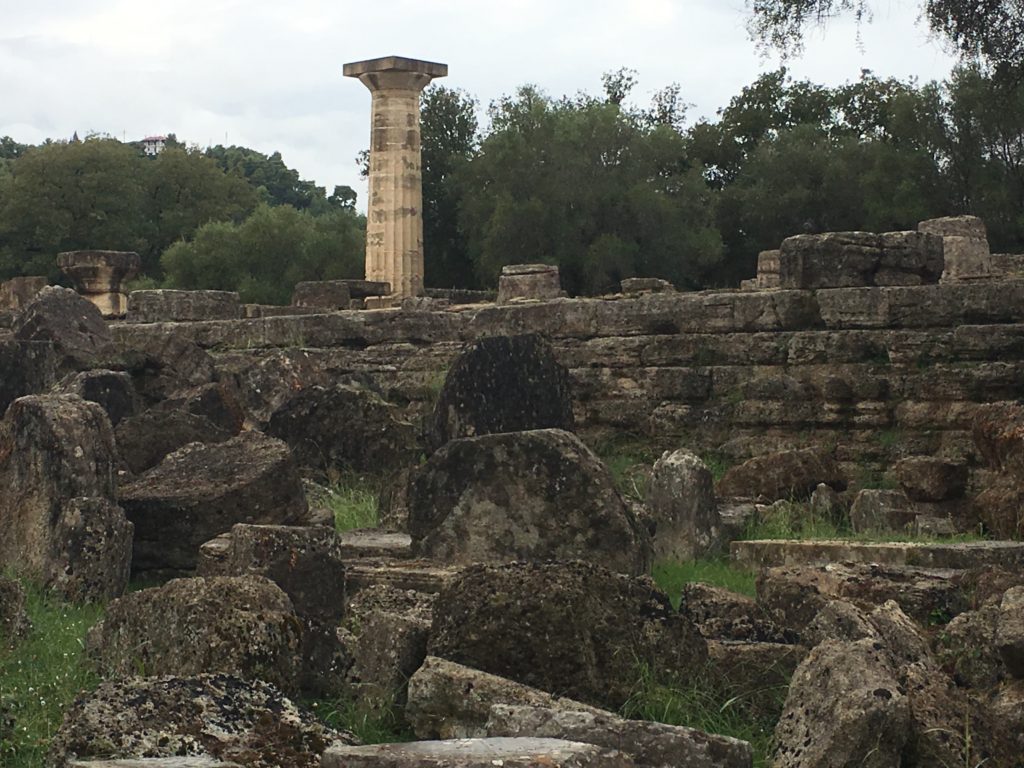
The Temple of Hera, the queen of the gods, is also located here. It was built around 600 BC, and the Olympic torch is lit on the altar of Hera’s temple to herald in the games (below – temple is in the background, altar in the foreground
).
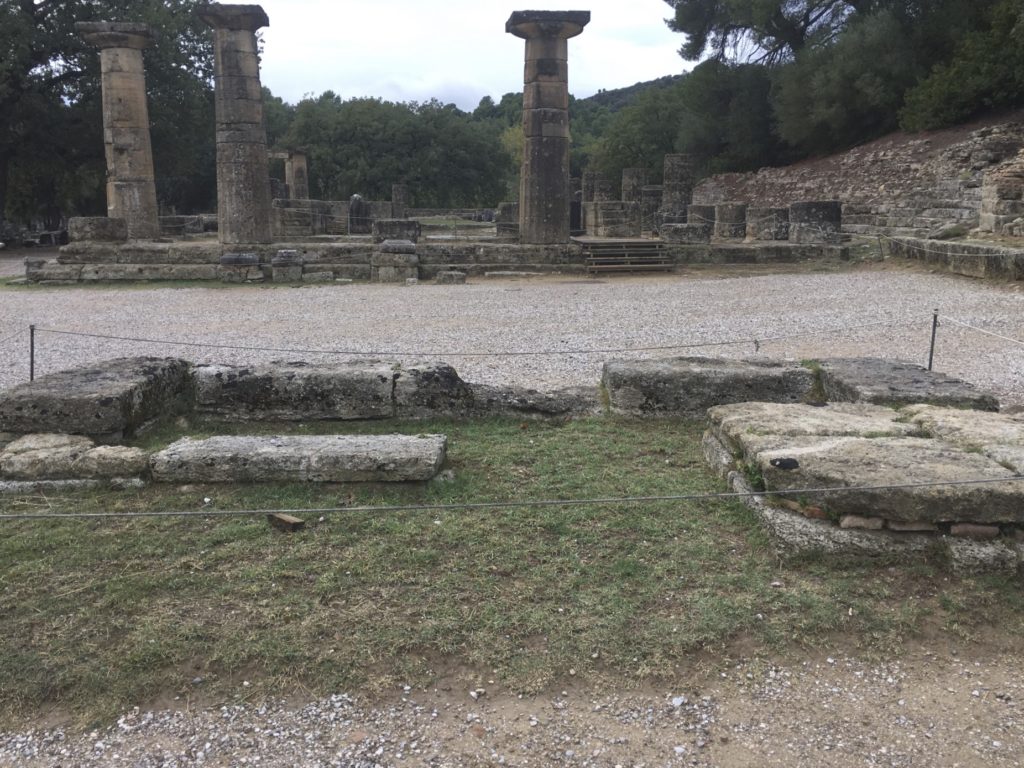
The original Olympic stadium track is approximately 192 meters x 29 meters. The stadium can accommodate approximately 45,000 spectators. There are no seats except for the a section in the grassy hillside for the judges. Others simply sat on the grass surrounding the stadium track.
(Below: top photo – stadium; middle photo – entrance to stadium; bottom photo; marble starting blocks in stadium0
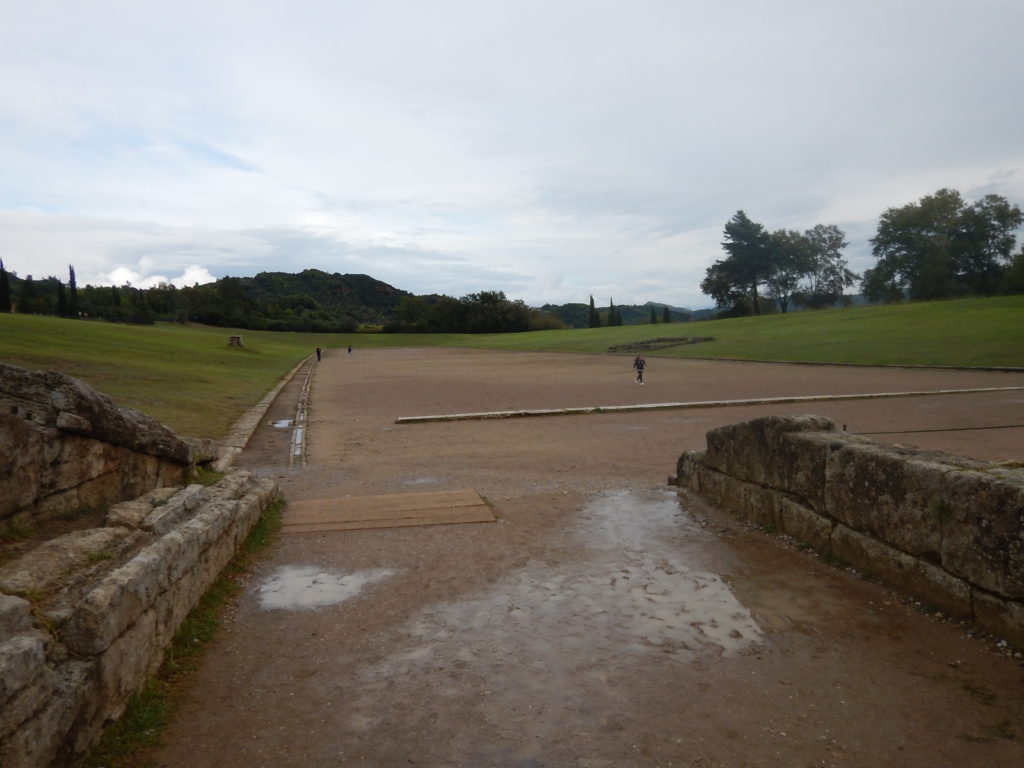
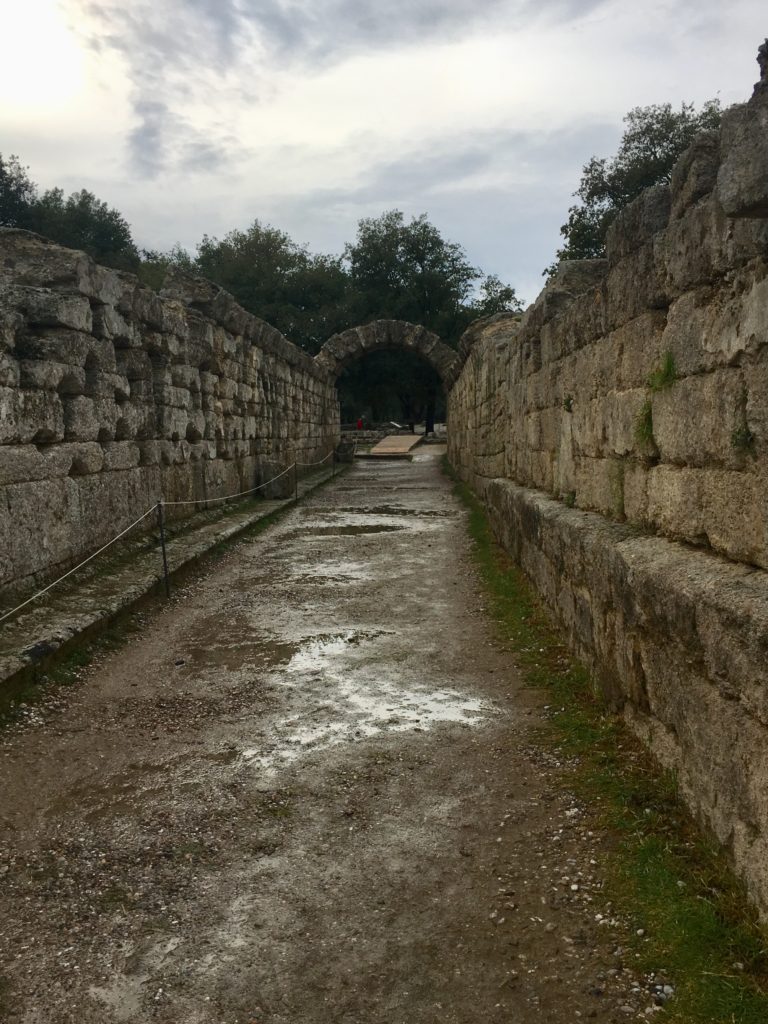
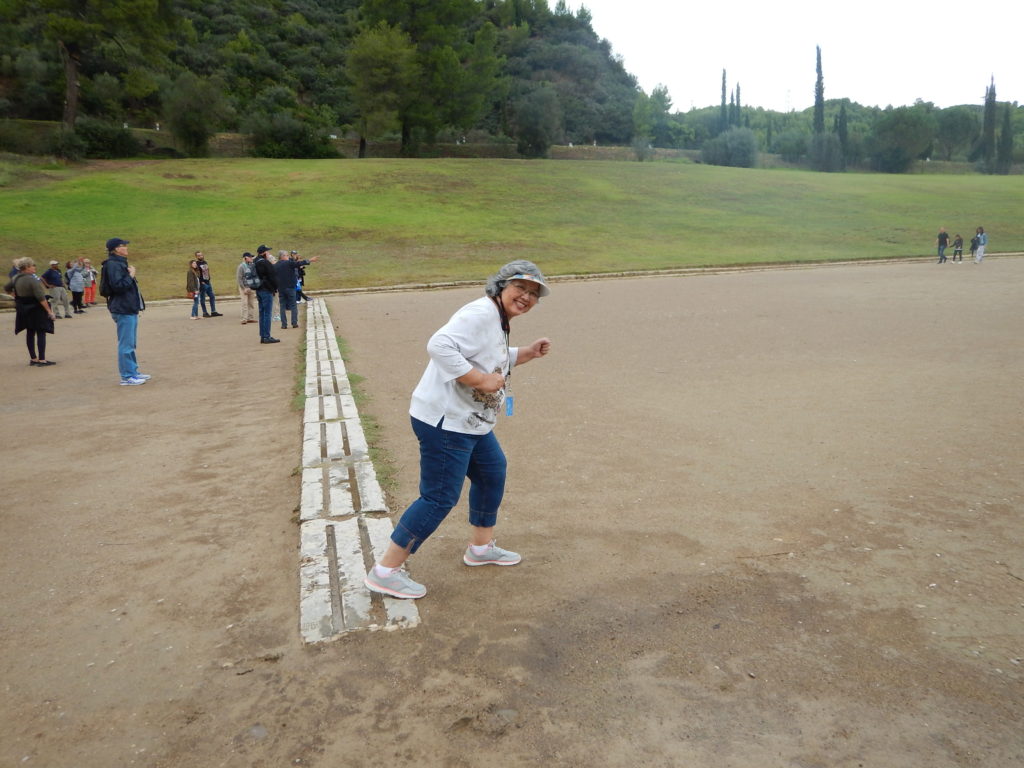
Five interesting facts abut the Olympics
1. During July and August, the season of the Olympic games, a truce was called for an entire month between warring city-states to allow people to travel safely between their homes to Olympia (considered a neutral area) for the games.
2. When an Olympic winner returned to his hometown, he was usually given free meals for the rest of this life.
3. Others events at the Olympic games also included writing, poetry, and history readings.
4. The Olympic torch made its first appearance during the 1936 Olympics. It is not an ancient custom.
5. Nike was the goddess of speed, strength, and victory long before being associated with a running shoe.
